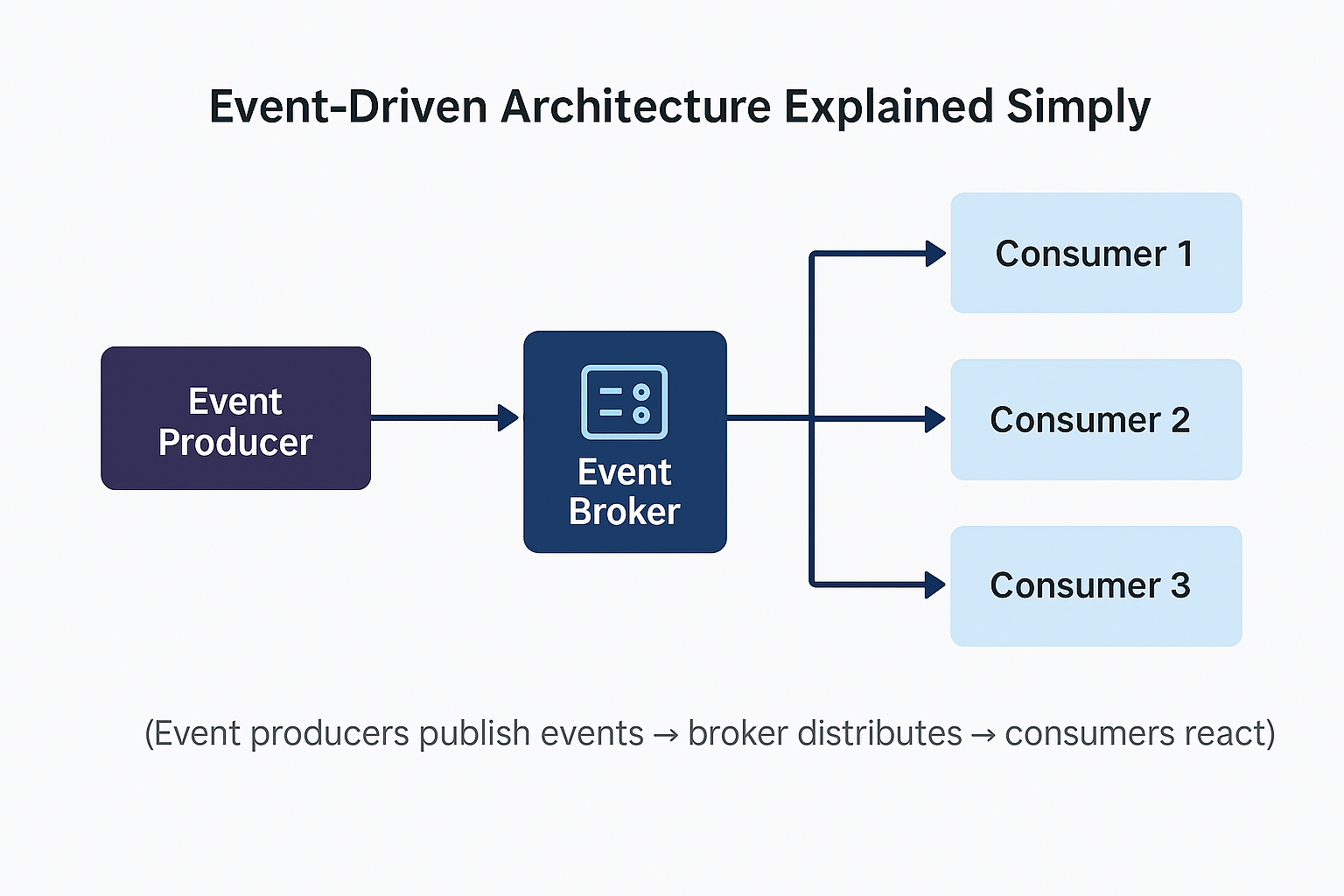Architecture Insights: Scalability Patterns Every Developer Should Know
Posted On: August 15, 2025 | 3 min read
Introduction
Scalability isn’t just about handling “more users” — it’s about ensuring your system continues to perform well when demand grows. From early-stage startups to global platforms, the right scalability patterns can make or break your architecture.
In this post, we’ll explore the most important scalability patterns that every developer should know, how they work, and when to use them.
1. Vertical Scaling (Scale Up)
What it is:
Adding more power (CPU, RAM, storage) to your existing machine.
When to use:
- Quick short-term performance boost
- Useful before hitting architectural limits
- Good for monolithic applications in early growth
Pros: Simple to implement, minimal code changes
Cons: Hardware limits, expensive beyond a point
2. Horizontal Scaling (Scale Out)
What it is:
Adding more machines/instances to share the workload.
When to use:
- Distributed systems
- Microservices architectures
- Handling large traffic spikes
Pros: Virtually unlimited scale, better fault tolerance
Cons: Requires load balancing and distributed state management
3. Load Balancing
What it is:
Distributing incoming requests across multiple servers to prevent overload.
When to use:
- Any system expecting high concurrent requests
- Critical for uptime and resilience
Popular Tools: AWS Elastic Load Balancing, NGINX, HAProxy
4. Caching
What it is:
Storing frequently accessed data in a fast-access layer (memory) to reduce load on databases.
Types of caching:
- Client-side caching (browser storage)
- Server-side caching (Redis, Memcached)
- CDN caching (CloudFront, Akamai)
When to use:
- APIs serving static or rarely changing data
- Content-heavy apps (images, videos, JSON responses)
5. Database Sharding
What it is:
Splitting a database into smaller, faster, more manageable pieces (shards).
When to use:
- Large datasets with heavy read/write traffic
- Global applications serving different regions
Pros: Reduces query load per server
Cons: Complex to manage and rebalance
6. Event-Driven Architectures
What it is:
Breaking workflows into loosely coupled components that communicate via events/messages.
When to use:
- Asynchronous workloads
- Systems with multiple independent services
Tools: AWS SNS/SQS, Apache Kafka, RabbitMQ

Figure: Key Scalability Patterns
Why These Patterns Matter
A single pattern rarely solves all scalability challenges. The best architectures combine multiple patterns — for example, a horizontally scaled microservices setup with caching and event-driven processing.
Pro Tip
Always measure before scaling. Use monitoring tools (CloudWatch, Prometheus, Datadog) to identify bottlenecks and choose patterns that match your actual pain points — not just trends.


No comments yet. Be the first to comment!